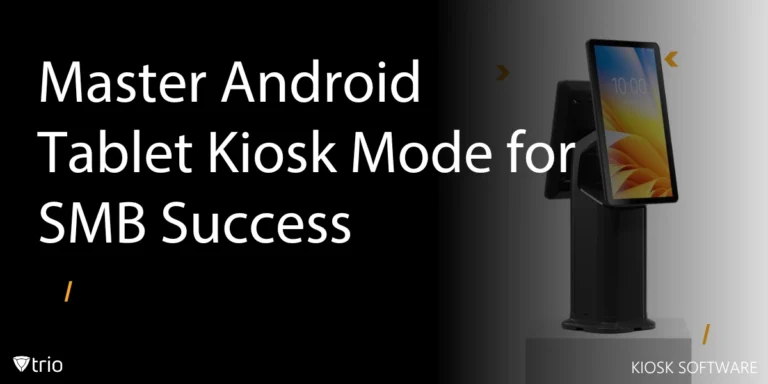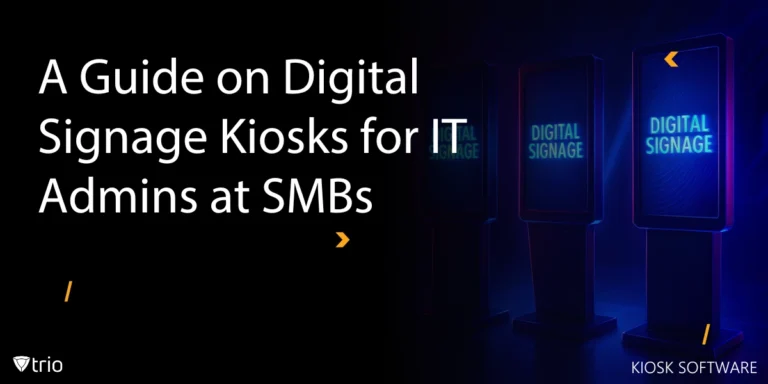Lean operations, a concept rooted deeply in the principles of efficiency and waste reduction, have exceeded traditional manufacturing sectors to become important in terms of technology and Mobile Device Management (MDM). According to this view, this methodology is not just about cutting costs but enhancing value, ensuring that every process, system, and resource is aligned to meet the developing needs of customers and businesses. By integrating lean principles, businesses in the field of MDM can enhance operational efficiency, improve responsiveness to customer demands, and finally support a more agile and robust IT system. This blog explores the core principles of lean operations, their application in MDM, and how adopting a lean strategy can drive significant improvements in both performance and customer satisfaction.
Understanding Lean Operations
Lean Operations refers to a systematic approach in operations management aimed at minimizing waste without sacrificing productivity. This methodology focuses on improving value for customers by optimizing the flow of resources, information, and materials in a business. Lean operations achieve this by identifying and eliminating non-value-adding activities.
Five Principles of Lean Operations
The core of lean methodology is defined by several fundamental lean operations principles:
- Value Definition: Understand what value means to your customers and focus all processes to enhance it.
- Value Stream Mapping: Analyze the flow of materials and information currently required to bring a product or service to the consumer and identify waste.
- Creating Flow: Once the waste is removed, ensure that the remaining steps flow smoothly without interruptions or delays.
- Establish Pull: Customer demand should dictate production. This means producing only what is needed when it's needed, reducing excess production and inventory.
- Pursuit of Perfection: Lean is not a one-time implementation but a continuous process of improvement.
Three Elements of Lean Operations in MDM
In the context of MDM, integrating lean principles can significantly enhance efficiency and responsiveness:
- Waste Reduction: Identifying and eliminating redundant processes in device management, such as manual configurations or repeated software updates, can simplify operations.
- Enhanced Flow: Improving the flow of information across devices ensures that updates, configurations, and troubleshooting are performed effectively.
- Responsiveness to Demand: By applying the pull principle, MDM systems can better respond to user needs and device lifecycle changes, ensuring devices are managed according to current demands rather than predicted needs.
All these strategies are part of comprehensive lean operations management, which ensures that processes are continuously optimized to reduce waste and improve service delivery.

Lean Tools and Strategies
Key lean operations tools designed to enhance efficiency and minimize waste:
- Kanban: A visual tool that helps manage workflow and inventory with a clear display of task progress. In MDM, Kanban can track device updates, repairs, or deployments, ensuring timely actions and minimizing backlog.
- 5S: This methodology focuses on organizing and maintaining the workplace efficiently. For MDM, 5S can ensure that all mobile devices are correctly listed, stored, and easily accessible, which is critical in reducing time spent locating and managing these assets.
- Six Sigma: A data-driven approach aimed at reducing defects and improving quality. In the context of MDM, Six Sigma can be applied to analyze and reduce errors in software deployments, device configurations, or security implementations.
Several lean operations examples in MDM demonstrate the effectiveness of Lean tools and strategies. For instance, using Kanban boards to manage device updates ensures that all tasks are visible and managed efficiently. Implementing lean operations principles also involves the strategic use of secure collaboration tools, which facilitate more effective communication and data sharing across teams, enhancing the security posture of MDM systems.
Creating a Lean Strategy
Developing a lean strategy in MDM involves several steps:
- Define Objectives: Clearly outline what you intend to achieve with MDM, such as reduced device downtime or faster deployment times.
- Measure Current Performance: Understand current performance levels to identify areas for improvement.
- Analyze Data: Use data from the MDM system to identify patterns and problem areas.
- Implement Changes: Start small by implementing changes that address the most crucial inefficiencies.
- Review and Adjust: Regularly review the outcomes of these changes and refine the processes as necessary.
Lean and Agile Operations
While lean focuses on waste reduction, agile operations emphasize flexibility and rapid response to change. Combining lean and agile can lead to systems that operate more efficiently and adapt quickly to new technologies or market demands. For example, agile can help quickly shift device management strategies in response to new software updates or security threats, while lean ensures that these changes are implemented in the most efficient way possible. Together, they provide a robust framework for managing IT resources, enhancing both performance and adaptability.

Challenges and Considerations
Lean Operations are fundamentally designed to enhance efficiency and reduce waste. For example, lean operations consulting can assist organizations in developing a streamlined cybersecurity incident response plan. This strategy ensures rapid and coordinated action in the event of security breaches, minimizing impact and maintaining flow. Furthermore, enhanced operational efficiency and strong security measures, key aspects of lean operations can lead to more favorable terms for cybersecurity insurance. They often recognize the reduced risk profiles associated with the implementation of lean methodologies. However, implementing these principles is not without its challenges. Here are some of the potential disadvantages and strategic considerations businesses must consider.
Disadvantages of Lean Operations
- Initial Investment: Adopting lean principles often requires significant upfront investment in training, system changes, and sometimes new technology. This can be a barrier, particularly for small to medium-sized enterprises (SMEs) with limited budgets.
- Resistance to Change: Employees and management may resist lean initiatives due to discomfort with changing long-standing practices and fear of job losses due to efficiency improvements. Overcoming this resistance requires effective communication and inclusive change management strategies.
- Overemphasis on Cost Cutting: There's a risk that an excessive focus on cost-cutting can lead to quality issues. Lean operations must balance efficiency with maintaining product or service quality to avoid lowering the value offered to customers.
- Dependency on Supplier Relationships: Lean operations often require just-in-time inventory systems, which can make a company vulnerable to supply chain disruptions. Building robust supplier relationships and having contingency plans are essential to mitigate this risk. Including lean operations in disaster recovery, strategies enables organizations to respond rapidly and efficiently to troubles, reducing downtime and protecting critical mobile device management systems.
Strategies to Overcome Challenges
- Employee Engagement and Training: Always involve employees in the lean transformation process and invest in ongoing training to help them understand the benefits and develop the necessary skills.
- Incremental Implementation: Start with small, manageable changes to gradually build confidence and demonstrate the value of lean principles.
- Focus on Quality: Ensure that lean initiatives emphasize quality as much as efficiency. Use lean tools like Total Quality Management (TQM) to improve both.
- Strengthen Supplier Networks: Expand supplier options and develop strong relationships to ensure supply chain reliability. Consider local suppliers to reduce risks associated with global supply chains.
Importance of Lean Operations in Technology and MDM
In the competitive sectors of technology and MDM, lean operations are not just advantageous; they are essential. As technology evolves at a rapid pace, businesses must adapt quickly to changes in consumer needs and technological advancements. Lean operations enable organizations to be more agile, allowing them to develop and implement innovations faster and more efficiently.
- Speed to Market: Lean operations simplify processes, reducing the time it takes to go from concept to market. In technology sectors, where product life cycles are short, speed to market can be a critical competitive advantage.
- Customer Satisfaction: By focusing on value from the customer's perspective, companies can continuously improve their products and services to better meet customer needs and enhance user experience.
- Reduced Costs and Increased Productivity: Lean helps identify and reduce waste in processes, which lowers costs, improves productivity, and maximizes resource utilization.
In conclusion, while implementing lean operations presents challenges, the potential benefits make it a crucial strategy for staying competitive, especially in technology-driven fields like MDM. Businesses that successfully integrate lean principles can expect not only to enhance operational efficiency but also to drive innovation and improve customer satisfaction.
Conclusion
Get Ahead of the Curve
Every organization today needs a solution to automate time-consuming tasks and strengthen security.
Without the right tools, manual processes drain resources and leave gaps in protection. Trio MDM is designed to solve this problem, automating key tasks, boosting security, and ensuring compliance with ease.
Don't let inefficiencies hold you back. Learn how Trio MDM can revolutionize your IT operations or request a free trial today!





